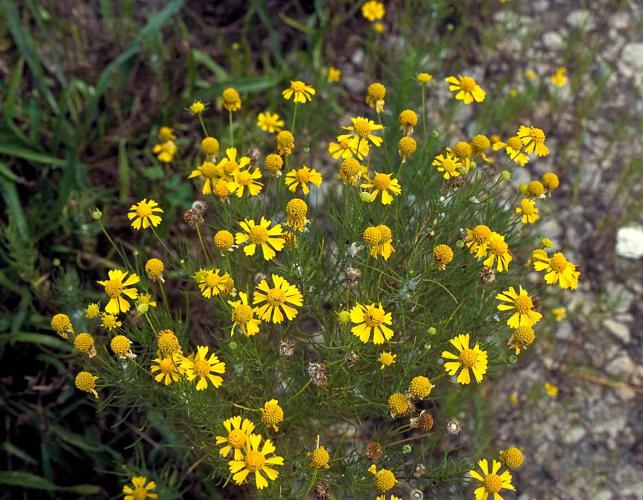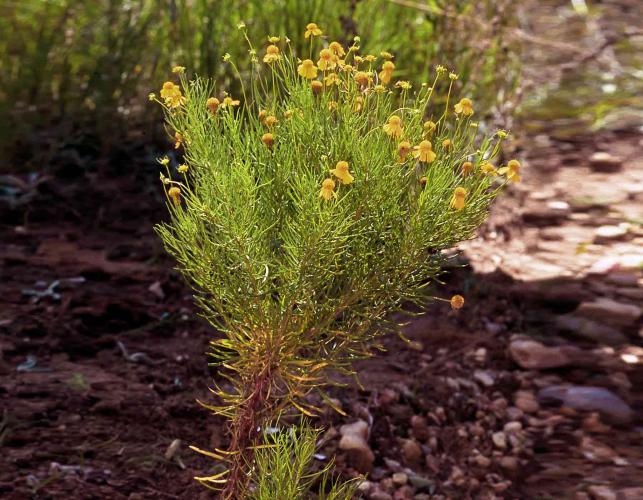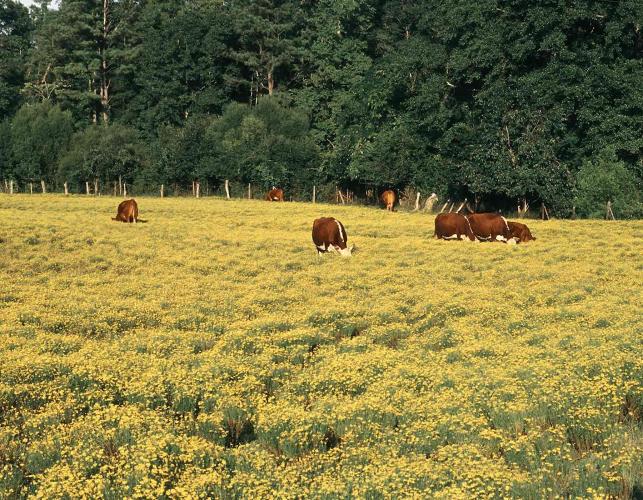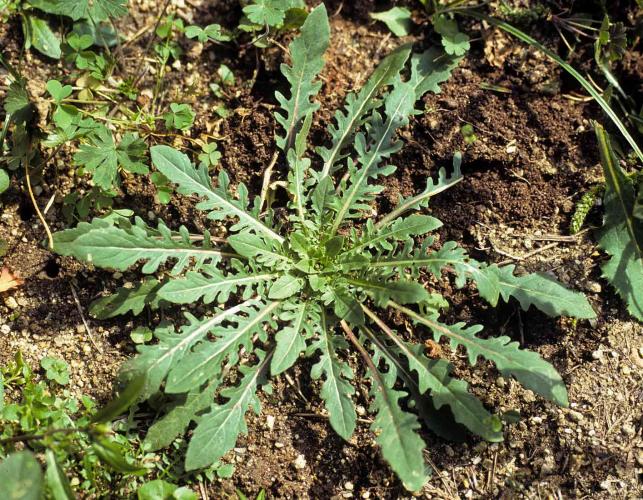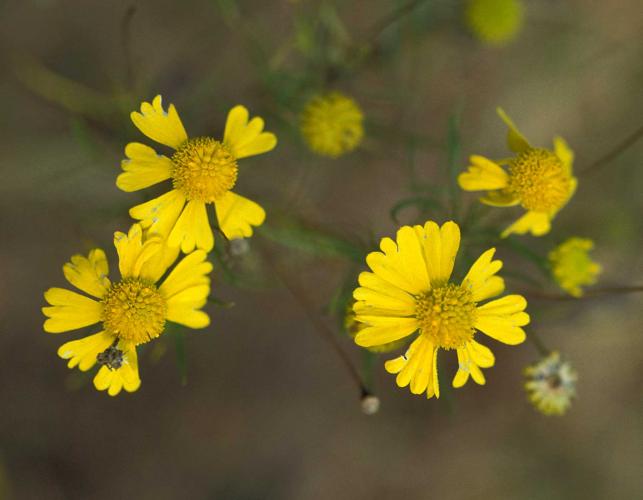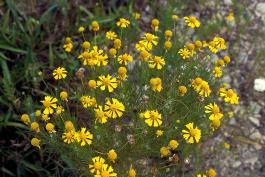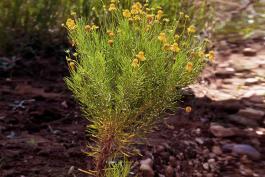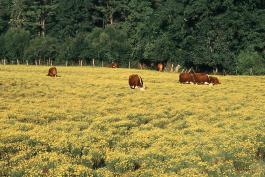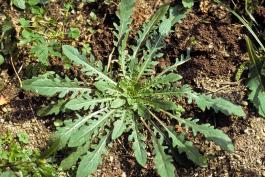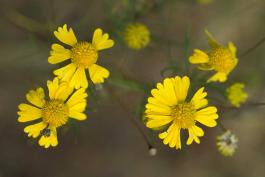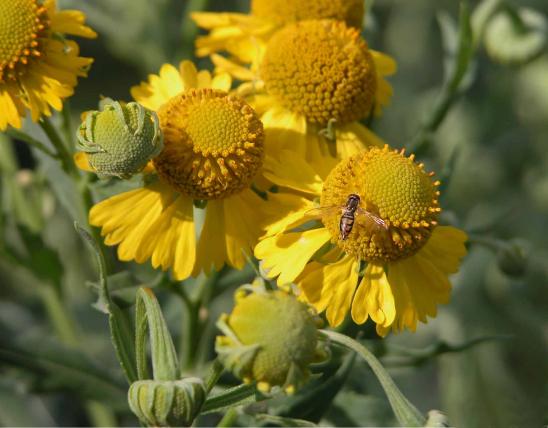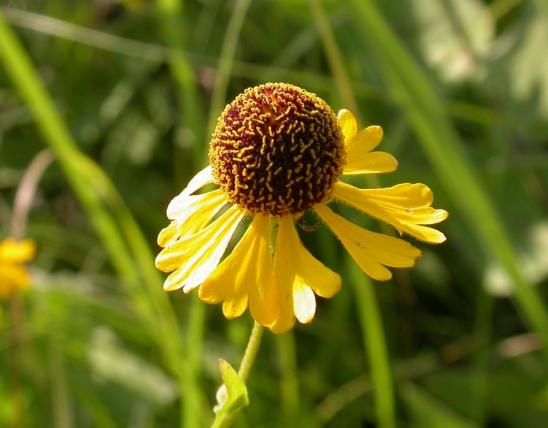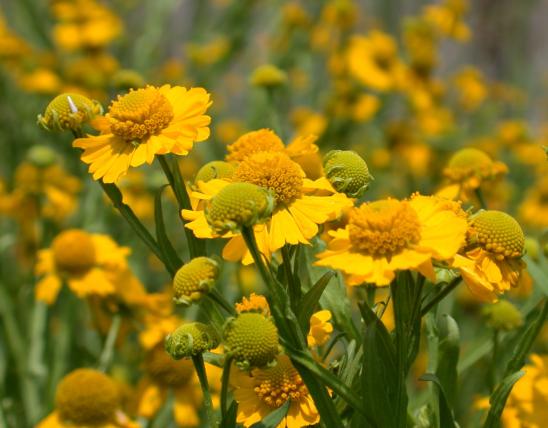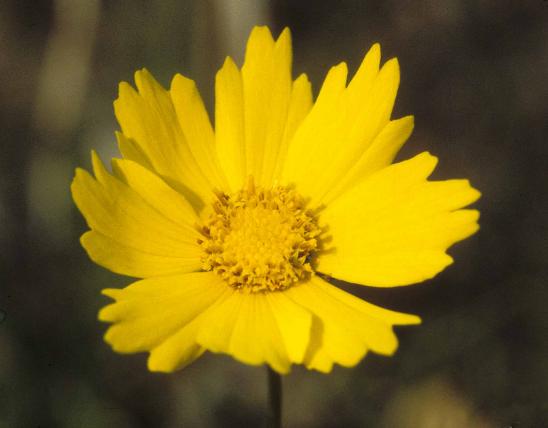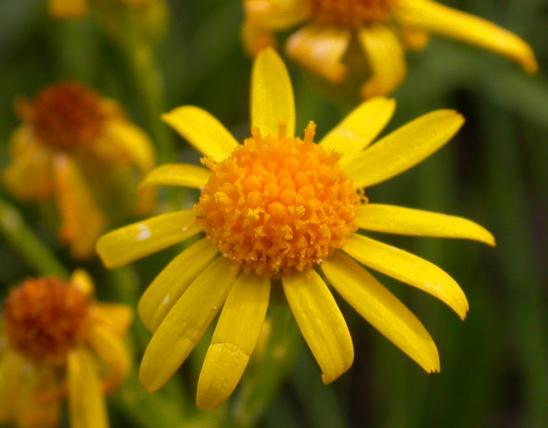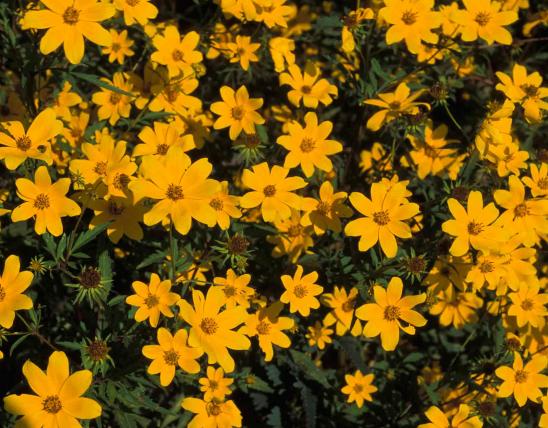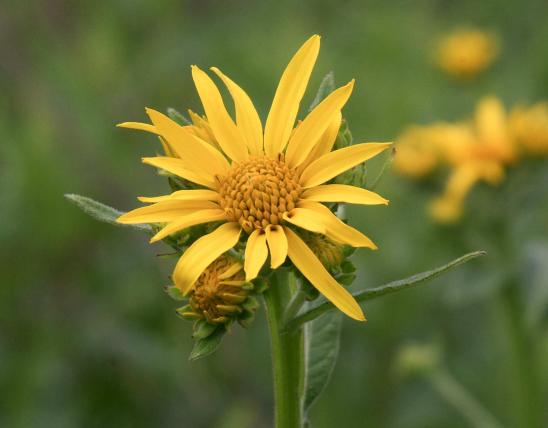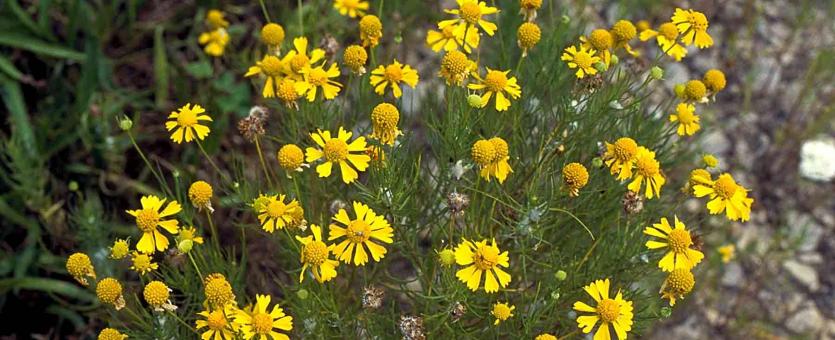
Bitterweed is a much-branched annual wildflower. Flowerheads are few to many on naked stems above the foliage, yellow, the 5–10 ray florets reflexed and notched; the yellow disk is bowl-shaped and points skyward. Blooms June–October. Leaves are profuse, linear (very narrow), to 1½ inches long, with smaller leaves arising from axils of larger ones. This plant contains bitter, toxic substances, and cattle forced to graze on it in overgrazed pastures produce bitter milk, thus the name bitterweed.
Similar species: Four species of Helenium grow in Missouri. The others are discussed elsewhere in this guide. All have rounded disks and yellow, fan-shaped, drooping ray flowers. This is the only one that is annual, has profuse, linear leaves, and lacks wings of leafy tissue on the stems.
Height: usually to 1 foot, but rarely to 2 feet.
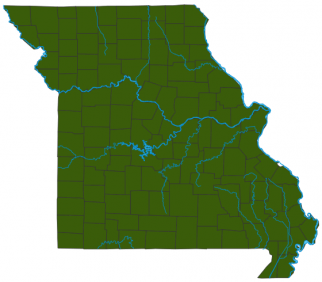
Scattered to common, mostly south of the Missouri River.
Habitat and Conservation
Occurs on banks of streams and rivers, openings of dry upland forests, and disturbed portions of upland prairies; also pastures, farmyards, railroads, roadsides, and open, disturbed areas. It forms dense populations along mowed roadsides and in overgrazed pastures. The weediest sneezeweed in Missouri, bitterweed’s home range is in Texas and Louisiana. It was first collected in our state in about 1879, and over the next 20 years it increased its range rapidly.
Status
Introduced wildflower. Original range was in Texas and Louisiana; first Missouri collections were in Poplar Bluff, around 1879; in the next 20 years, the species had rapidly spread to the St. Louis and Kansas City regions and to southwestern Missouri.
Human Connections
The dried and powdered flowers were historically used as snuff. Sneezeweeds contain toxic, bitter substances. In the West, they cause “spewing disease” in cattle, with vomiting, diarrhea, and death. Grazing animals avoid these plants. Pastures full of sneezeweeds have probably been overgrazed.
Ecosystem Connections
Bees, wasps, butterflies, beetles, and other insects collect nectar and pollen from the flowers. The larvae of some moths bore into the stems and roots, and weevil larvae bore into the immature seeds. Prairie-chicken are known to eat the seedheads. Most mammals avoid eating the bitter foliage.
